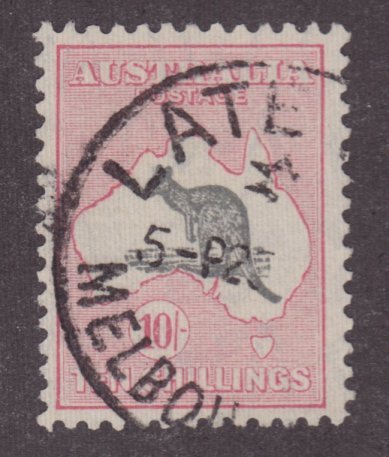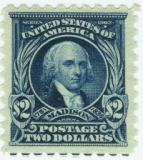
Discussion - Member to Member Sales - Research Center

Discussion - Member to Member Sales - Research Center



Login to Like
this post
In general, when you see straight lines going over the design on US stamps, it will either be a scratched plate or a wiping smear.
In this case, it is a scratched plate. I see what appears to be at least 2 other minor scratches, and maybe even another major scratch (or some other major stamp fault).
Nice.

Login to Like
this post
Thanks KHJ. Is it rare to see a serious scratch plate flaw like this in a stamp? Does it change the value of this stamp much?

Login to Like
this post
EFO collectors like them. Usually, it makes it more likely it will get sold. Some plate scratches, especially well-documented ones (i.e., plate position identified) may command a premium. On classic US postage, they can be useful for IDing plate positions.
I'm not familiar enough with US revenues to comment specifically on this stamp.

Login to Like
this post
Scott does not list a scratched plate for R15c, but that's not surprising, as there are a myriad of cracked and scratched plates, double transfers, and other varieties that Scott omits.
It's neat, I collect them, but not majorly valuable. It likely turns a $2-3 document into a $10-15 document.

Login to Like
this post
I have an R13c on the back of a photograph with similar scratched plate markings (on the right through "CENTS").

And here is an R59c with a cracked plate line at the bottom. This one is listed in Scott.


Login to Like
this post
Thanks everyone for the information.
This stamp is in a receipt book that dates from 1869 - 1870. The book was used by Reuben Weidenhammer of Richmond Twp, PA, the executor of Jacob Merkel's estate (Jacob was a prosperous farmer and died January 1, 1869) to record payouts and has revenue stamps on 39 out of the 105 receipts in the book.
you can see the receipts here:
and the stamps here
There are actually several stamps with plate scratch faults.

Login to Like
this post

I was going through some of my documents and came across this stamp. I'm curious if anyone knows what caused the line. I thought the stamp had been torn but no it's not damaged.... but what caused it. Any ideas?


Login to Like
this post

re: What caused this?
In general, when you see straight lines going over the design on US stamps, it will either be a scratched plate or a wiping smear.
In this case, it is a scratched plate. I see what appears to be at least 2 other minor scratches, and maybe even another major scratch (or some other major stamp fault).
Nice.

Login to Like
this post

re: What caused this?
Thanks KHJ. Is it rare to see a serious scratch plate flaw like this in a stamp? Does it change the value of this stamp much?

Login to Like
this post

re: What caused this?
EFO collectors like them. Usually, it makes it more likely it will get sold. Some plate scratches, especially well-documented ones (i.e., plate position identified) may command a premium. On classic US postage, they can be useful for IDing plate positions.
I'm not familiar enough with US revenues to comment specifically on this stamp.

Login to Like
this post

re: What caused this?
Scott does not list a scratched plate for R15c, but that's not surprising, as there are a myriad of cracked and scratched plates, double transfers, and other varieties that Scott omits.
It's neat, I collect them, but not majorly valuable. It likely turns a $2-3 document into a $10-15 document.

Login to Like
this post

re: What caused this?
I have an R13c on the back of a photograph with similar scratched plate markings (on the right through "CENTS").

And here is an R59c with a cracked plate line at the bottom. This one is listed in Scott.


Login to Like
this post

re: What caused this?
Thanks everyone for the information.
This stamp is in a receipt book that dates from 1869 - 1870. The book was used by Reuben Weidenhammer of Richmond Twp, PA, the executor of Jacob Merkel's estate (Jacob was a prosperous farmer and died January 1, 1869) to record payouts and has revenue stamps on 39 out of the 105 receipts in the book.
you can see the receipts here:
and the stamps here
There are actually several stamps with plate scratch faults.

Login to Like
this post

